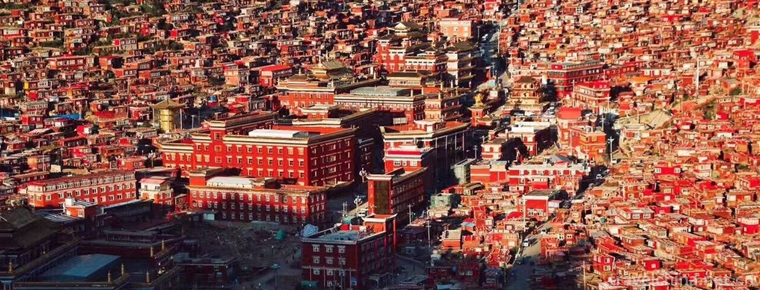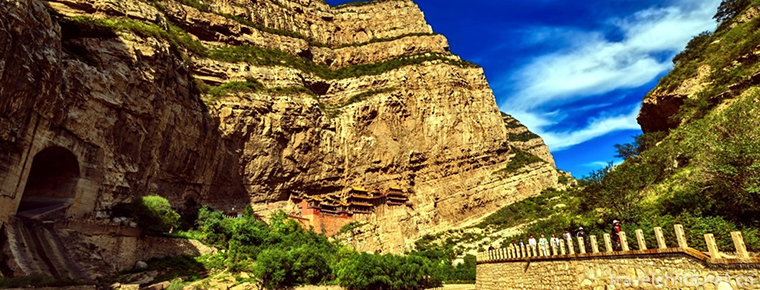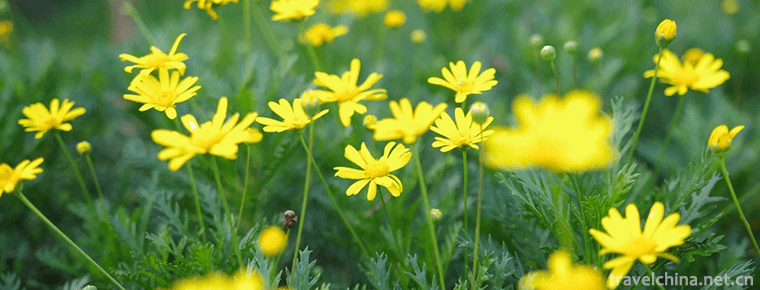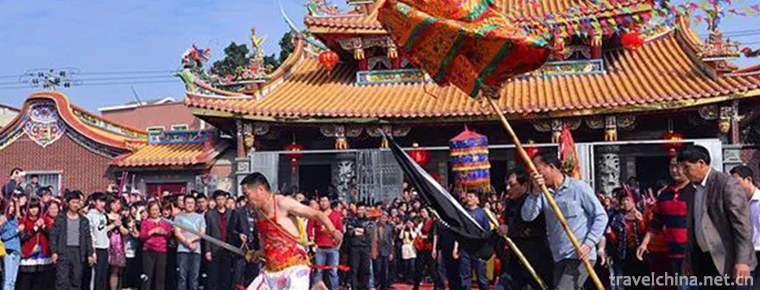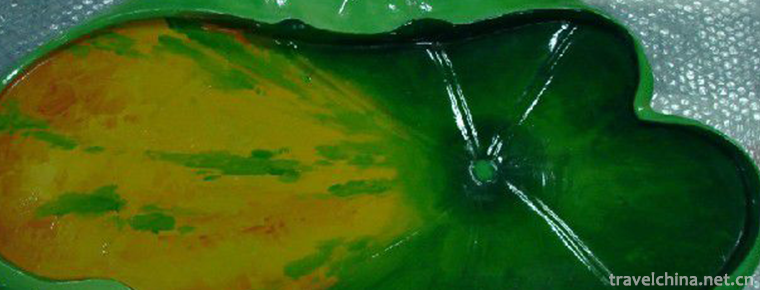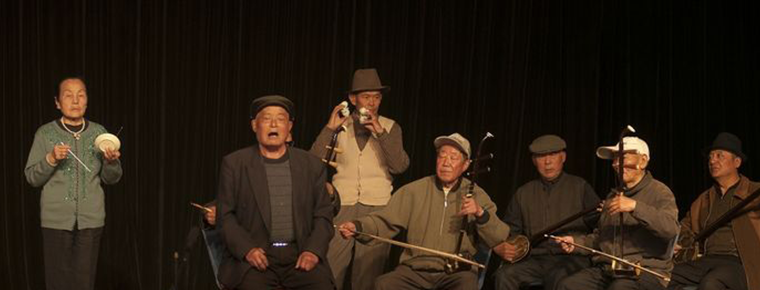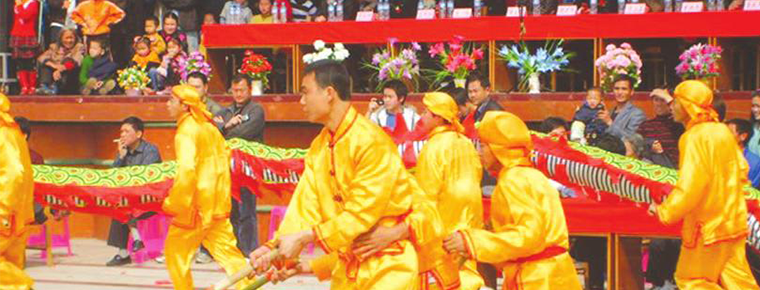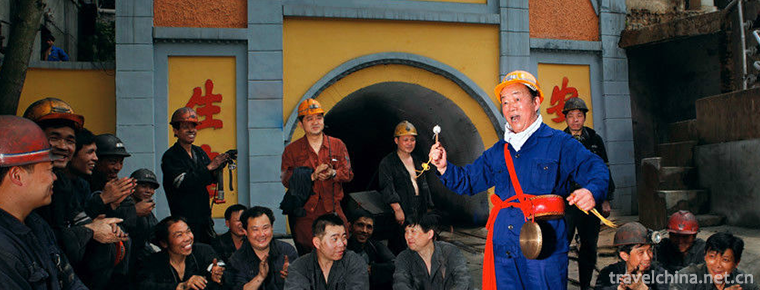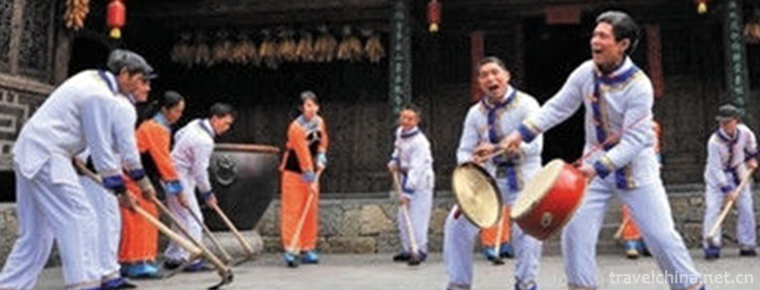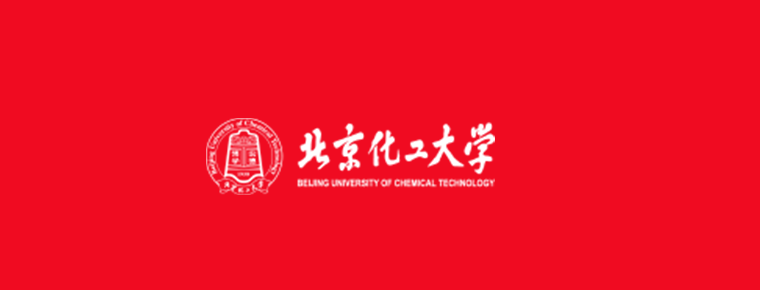Luocheng ancient town
Luocheng ancient town
Luocheng ancient town, known as "China's Noah Ark", is located in the northeast of Qianwei County, 60 kilometers away from Leshan City and 25 kilometers away from Qianwei county. There are seven ethnic groups, Han, Hui, Yi, man, Tibetan, Li and Miao. Liangting street, the main street of the ancient town, is commonly known as "boat shaped Street". It was first built in the first year of Chongzhen in the Ming Dynasty (1628). Today, the old street still retains some of the cultural features of Sichuan in the Ming and Qing Dynasties.
In 1982, Australians built a "China city" in Melbourne, and Luocheng ancient town became famous overseas. In 2001, UNESCO officials called it "China's Noah's Ark"; in 1992, Luocheng town was selected as the "provincial historical and cultural town"; in June 2007, the ancient town "Liangting Street" became a provincial cultural relics protection unit; in January 2010, it was named the first batch of "historical and cultural streets" in Sichuan Province; in January 2018, Luocheng ancient town was rated as a national AAAA scenic spot.
Introduction to ancient town
History of scenic spots
Luocheng ancient town was built in the late Ming Dynasty (1628 AD), formed in the Qing Dynasty. Luocheng ancient town is located in the border area and used to be an important military area. Both Ming and Qing Dynasties were "military shops" for stationing troops to control the Barbarians (southwest ethnic minorities), so it was called "luochengpu". Yingpanshan in the west of the town was the place where soldiers were stationed at that time.
In 1986, Chuanxing street was declared as a cultural relic protection unit by Leshan Municipal government.
In 1992, it was approved by Sichuan Provincial People's government as a "provincial historical and cultural town".
In 2007, the boat street was announced as a provincial cultural relics protection unit by the people's Government of Sichuan Province.
In January 2010, boat street was named the first batch of "famous historical and cultural streets" in Sichuan Province.
In January 2018, Luocheng ancient town was rated as a national AAAA scenic spot.
Architectural features
Mosaic style buildings block the old streets of Luocheng, and the streets covered with bluestone slabs have become cement roads. Liangting street is the center of Luocheng old times. It is called "boat Street" by local people. It is 209 meters long and 9.5 meters wide. It looks like a big boat or a huge wooden shuttle. It has been described by many people as "the masterpiece of old Sichuan culture".
It is said that this old street with the beauty of twilight is the only boat shaped street in China. On both sides of the "boat Street" are long rows of old tiled houses with wooden structures. For hundreds of years, Luocheng people have been drinking, eating meat, drinking tea, listening to Xiaoqu, picking up ears, smoking tobacco, selling dog skin plaster in this "cool room" that is not afraid of rain and sun, enjoying the pure happiness of the world. Under liangtangzi, there were some time-honored shops, such as sanyuanhao, Fengtai store, hengyouheng, sinang hall, Changqingyuan, etc., which were replaced by various clothing stores, snack shops, department stores, grocery stores, hardware stores, barber shops, burial shops, hotels, teahouses, martial arts schools, shoe shops, film studios, singing halls, and clinics, of which the number of teahouses is the largest 。
geographical environment
Luocheng ancient town, located in Luocheng town in the northeast of Qianwei County, is 25 kilometers away from Qianwei county and 60 kilometers away from Leshan City. It is adjacent to Leshan Yibin section of Chengdu Chongqing Ring Expressway and national highway 213, with convenient transportation. Subtropical monsoon climate, warm and humid.
Origin of town name
There are many legends and anecdotes about the origin of the name of Luocheng town. There are two popular sayings. The first is: at the end of Ming Dynasty, there were two thatched cottages under a big banyan tree. The owner's name was ou, which provided places for nearby farmers to sell or exchange cattle, which was called "Tiao Shi". Later, the bull market continued to develop, the variety of goods exchanged expanded to salt, iron, cloth, rice, oil and so on. Therefore, the people of the surname Ou built several houses and opened inns and restaurants, forming a "Yao Dian Zi". Not long after that, the people surnamed Yang in Yangjiawan, not far from here, thought that the place was the territory of the Yang family and wanted to join the market. However, the people surnamed Ou refused to agree and the two sides could not settle down. Since then, people surnamed Ou felt that the market should be named, which is different from Yangjiawan. According to the fact that these businessmen came from the southeast and northwest, which was called "four dimensions" in ancient times, and "four dimensions" were combined into "Luo". In order to attract visitors from all directions, to achieve the purpose and desire of prosperous market. What about the word "city"? Because the Ming Dynasty called farmers "natives" (aborigines), the market was built by their hard work. Combining the above two meanings, it is named "Luocheng".
The second is that it was named in memory of Luo Cheng, a famous general of the Tang Dynasty. According to textual research, there is indeed a "Luocheng Temple" two miles southeast of Luocheng Town, and there are still remains. It is said that after Luo Cheng died, his descendants fled to Sichuan and settled here to build this temple to sacrifice their ancestors. However, there are many doubtful points in this view: first, Luo Cheng lived and will be in Sichuan; second, the people with the surname Luo who built the temple could not provide evidence that they were descendants of Luo Cheng; third, there had never been any activities to commemorate Luo Cheng since records in Luocheng town.
Speciality Foods
Ancient town is a place where Hui people live. The production of Muslim beef series food has a history of more than 200 years, including dried beef, golden beef, Dengying Beef, spicy beef and so on. It is well-known for its fine workmanship, complete in color, aroma and taste, with endless aftertaste. It is loved by customers and sold far away in and out of the province. In addition, the traditional famous foods in the ancient town include "three cannons", "iron cake", "wine and rice", "yeerba", "mutton soup" and "KaKa", which have their own characteristics and long taste.
Reputation of ancient town
As a result of the news media coverage, Luocheng ancient town has a greater visibility at home and abroad. There have been "Legend of Hayden", "rice", "robber's daughter", "Sichuan teahouse", "true love stepmother" and other film and television crew came here to shoot, which has aroused great interest of tourists. CCTV's "China on the tip of the tongue" and "30 degrees north latitude China trip" also came to the ancient town to shoot. The protection, development and utilization of the ancient town have been put on the agenda of the municipal and county governments. They are working out detailed planning and development goals, implementing policies and measures, and speeding up the pace of construction. It is believed that in the near future, a well preserved and unique ancient town of Luocheng will be presented to visitors.
Shostakovich once said: "a lot of things are old and gone before our eyes, but I think many things that seem to have passed away will eventually appear fresh, powerful and eternal.". Nowadays, most people living in Sichuan have not realized that it is the ancient boat street that represents Sichuan culture in front of the world, rather than Chengdu, which is full of new weather and construction.
In 1983, at the Guangzhou international trade exchange conference, Sichuan Southwest Architectural Design Institute displayed a picture of Luocheng "boat shaped Street" taken from the air. As a result, the figure was selected by Australian participants in the bidding, and the two sides initialed the agreement in April of that year. Soon, Australia's Chinatown Co., Ltd., which is composed of investors from eight countries and regions, including Japan, Thailand and Hong Kong, began to invest in the construction of "China city" with Luocheng "boat Street" as the mother parent in Loch City, 24 km away from Melbourne, Australia. The city covers an area of 9 hectares and a construction area of about 30000 square meters. UNESCO officials also visited Luocheng. At shiyangchang passenger station in the southern suburb of Chengdu, there are several buses to Luocheng every day.
Main attractions
Ancient boat Street
Luocheng ancient town is located on the top of an oval hill. The main street is a boat shaped structure. It is long from east to west and short from north to south. It is very similar to a weaving shuttle. Therefore, it is also called "a shuttle in the cloud". Looking down from a high place, it looks like a ship resting on the top of the mountain. The street is the bottom of the boat, the buildings on both sides are the ship's side, the theater in the middle is the cabin, the Lingguan temple at the east end is like the tail canopy of the ship, the sky lantern stone pillar at the west end is like the pole of the ship, and the 22 meter long crossing tower (existing) on the right side of the temple is like the rudder of a ship. If you climb high and look far away, you will see that this magnificent and unique ship is chopping waves and setting sail. Therefore, Luocheng has won a good reputation: "a boat on the top of the mountain." It is called "boat shaped Street" by local people. It was built in 1628, the first year of Chongzhen in Ming Dynasty. It is 209 meters long and 9.5 meters wide. It is also known as "Liangting Street". It is the center of Luocheng in the old times. The long rows of old tile houses with wooden structures on both sides of the street and the eaves on the side facing the street are extremely wide, forming a rare corridor called "liangtangzi". Its supporting point is more than 100 old logs standing on the hexagonal long stone pillars. It is known as the "fair and rainy market" for its shelter from rain and snow in winter and the sun in summer. On the left side of the boat street is the towering iron mountain.
There is a local legend about the origin of the 209 meter long and 9.5-meter-wide ship: during the reign of Chongzhen at the end of the Ming Dynasty, a foreigner named Zhang Xiucai came here to drink tea in a teahouse. When he saw the tea drinkers groaning and drinking the water in the teacups before leaving, he asked an old man next to him for the reason. The old man sighed and said, "this town is short of water!" Zhang Xiucai was silent for a long time and read out four pithy formulas: "Luocheng dry dock, merchants can not stay long. If there is no water shortage, Luocheng will be built into a boat. They all applauded and unanimously recommended Zhang Xiucai, who was eager for justice and justice, to be the leader of shipbuilding. Zhang Xiucai led hundreds of skillful craftsmen to build a new house by demolishing the old houses. In less than three years, the "ship" was built, which has been more than 300 years. People from four prefectures and eight counties heard that a big boat had been built on the top of the mountain, and they came to see it from afar. For a time, people came and went, and Luocheng town became more lively and prosperous. The construction of boat shaped street also expresses the ardent vision of Luocheng cultural elites and craftsmen for water culture.
Three palaces and five temples
Nanhua Palace
It was built in 1879 in the fifth year of the reign of Emperor Guangxu of the Qing Dynasty. The structure is a double main hall and a theater hall. It was destroyed by fire. A pair of stone lions, which are more than 2 meters high, are located in the original site.
Wenchang Palace: it was built in the 34th year of Qianlong reign of the Qing Dynasty (AD 1770). It is famous for its wood carving. It was cultivated in Daoguang, Xianfeng, Tongzhi and the Republic of China. The hall, with two layers and two corridors, is mainly made of wood carvings. In 1854, Emperor Guan was worshipped and used as a grain depot in 1982.
Shoufu Palace
It was built in 1767 A.D. It is now a residence for residents.
Yu Temple
It was built in 1758 in the 23rd year of Emperor Qianlong's reign of the Qing Dynasty. The structure consists of three layers of two corridors, a stage holding hall and a magnificent temple. It is famous for its stone carvings. Now it is the staff dormitory of Luocheng grain station.
Chuanzhu Temple
It was built in 1894 A.D. The structure is a double brick wall, with holding hall in front, main hall door in the middle and stage. Now two families live, most of them still exist.
Lingguan Temple
It was built in 1754 A.D. They were cultivated in 1859 and 1919 respectively. The structure is double type, the front is the main hall, and the back Guanyin is basically intact. Lingguan Temple worships Lingguan Bodhisattvas for rain. In drought years, the whole town gathers in front of the temple. Gongs and drums, flags, melons, axes, and umbrellas open the way. The monks hold wood carved Lingguan Bodhisattvas. As they walk, they read scriptures, pray to the gods, show their spirits and show their saints. Early rain is given to protect one side. Incense and wax are set outside the doors of the town to offer fruit to spiritual officials Worship, to the water dragon for rain.
Xiaogong Temple
Qianlong of Qing Dynasty (1736-1795 A.D.) was built. He was cultivated during the reign of Tongzhi in Qing Dynasty (1862-1874 A.D.). The structure is a double two story stage, which is now used for community office.
Xingjin Temple
It was built in 1770 A.D. In the period of the Republic of China, it is a two corridor residential building.
Surrounding remains
Luocheng Temple
Erli, Southeast of the town, was built in 1504 in the 17th year of the reign of emperor Hongzhi of the Ming Dynasty (AD 1504). It was built in the 11th year of Kangxi reign of the Qing Dynasty (AD 1672), the 18th year of Jiaqing Dynasty (AD 1813) and the second year of the Republic of China (AD 1913). The structure is a triple hall, and there are two workshops outside the gate. The original name is Baiyi'an.
Chuanzhu Temple
In erlongyan, it is a stone building of Ming Dynasty. It was once the residence of Zhushan township government and Datong middle school. In 1996, it was demolished because of moving to Datong middle school.
Wangjia Temple
Five kilometers away from the town, it was built in the Ming Dynasty. It was built in Yongzheng period of Qing Dynasty (1723-1735 A.D.), and its original name was "Yunfeng Temple". Later, it was renamed as "Yunfeng Temple" because of the donation of Wang family. The site is now in existence.
Yunfeng Temple
The temple at the foot of Tieshan mountain, commonly known as "Dawan Temple", was built in the 11th year of Zhengde (1516 AD). They were all cultivated in 1680 ad, 1800 ad, 1881 ad. The structure is a double corridor, which was originally attached to a primary school. Now it has been converted into a villager's house and the existing site.
Baiyun temple
It was built in Baiyun Mountain during the reign of Emperor Qianlong of Qing Dynasty (1736-1759). It is used by Baiyun primary school.
Chongfu Temple
Zhendong Liuli was built in the reign of Jiajing in the Ming Dynasty (1522-1566). I have cultivated and worshipped the Great Buddha.
Baoyuan Temple
Five li northeast of the town, built in Ming Dynasty. Because the "Huaiqing monk" (surnamed but also known as Dan monk) carried out revolutionary activities in the temple, the Kuomintang government arrested Leshan City and set the temple on fire.
Zhushan Temple
Twenty Li north of the town, Mingjian. In the Qianlong period of the Qing Dynasty, there was a primary school, and later changed to Zhushan township government station.
Changlong Temple
In yijiawan, Mingjian. It has been used by Changlong primary school and has been preserved as a relic.
Kofukuji
The white crane forest outside the town was built in the seventh year of Yongzheng reign of the Qing Dynasty (1729 A.D.), and its structure is a triple hall.
Ginkgo Temple
It was built in pengjiashan, the sixth group of Qingshi, in the Hongwu Period of Ming Dynasty (1368-1398). The structure is three layers and two corridors.
Tiancheng Temple
It was built in Sha'ao of Baihe Township during the Jiaqing period of Qing Dynasty (1796-1820). It is said to be "tiangongtang" in the Ming Dynasty, but it does not exist now.
Tieshan Temple
On the top of the iron mountain, the year of xiaozongchunxi in the Southern Song Dynasty (1174-1189 A.D.) was built. The structure is more than five halls, with a large project. There are five halls in the temple, and the stone is completely wooden. Li Yonghe is stationed in this pavilion. It was demolished in 1958. In 1993, it was approved by the county people's government for repair, and in 1997, the construction of the double Hall of the brick concrete structure was approved by the Ministry of united front of the county.
Located in the southern suburb of the ancient town, 723.9 meters above sea level, there was once a "iron mountain view" built in the Song Dynasty. The ancient trees on the mountain are towering and the terrain is dangerous. It has always been the place that strategists must contend for. During the Three Kingdoms period, Zhuge Liang, a famous statesman and strategist of Shuhan Dynasty, once made iron and made weapons in Tieshan. According to the records of the county annals of Yuanhe County, Jiannan Daoxia, there was iron from iron mountain 70 Li southeast of Shijian County in Lingzhou. Zhuge Liang took it as weapons, and its iron was strong and powerful, which could be used as tribute. In the 1950s, a stone tablet engraved with "ZHUGE Wuhou smelting iron in this area" was excavated.
At the end of Qing Dynasty, Li Yonghe and LAN Chaoding, the famous peasant uprising army in Yunnan and Sichuan, took Tieshan as their base for several years. After being defeated by the Qing army, Li and LAN gave their lives generously. In 1908, Xiong Kewu, the person in charge of Sichuan Province of the alliance, secretly made bombs here to overthrow the Qing Dynasty. The site is still alive.
Tieshan temple has many historical sites. According to records, there are 18 temples on the mountain, such as Dawan temple, stone temple, earth temple, Prince Temple and Guanyin Pavilion. Every temple fair, pilgrims come from afar, and there is an endless stream of traffic. Due to historical changes, temples on the mountain have no trace. In 1993, with the approval of the relevant departments, the masses voluntarily donated money to restore and rebuild the Guanyin Pavilion, which was once the style of the past.
Tieshan Lake
Tieshan lake is located at the foot of Tieshan mountain in the northern suburb of the ancient town, with a total length of 5.7 km and a water storage capacity of 28.9 million cubic meters. It is the largest reservoir project in Leshan. It can irrigate 54000 mu of farmland, with an area of 2800 mu, an effective storage capacity of 16.9 million cubic meters and a dam height of 28.05 meters,. Built in 1973, it can not only irrigate farmland, but also meet the need of drinking water for people and livestock in the town. The surface of the reservoir is tree like, and there are flocks of wild ducks in the lake. In the pine forest at the foot of the iron mountain on the right bank of the lake, about 20000 white cranes come to live. Several pavilions and pavilions have been built in the lake. Surrounded by the lake, there are more than ten islands. On the island, bamboo trees are lush, mountain flowers are everywhere, birds are singing and flowers are fragrant, and the scenery is pleasant. Fruit trees form a forest. In golden autumn, oranges are bright red all over the mountain, and green trees and bamboos hang in the lake. The lake area is surrounded by clouds all the year round. The scenery is beautiful and charming. Boating on the lake, the water and the sky are the same, and the misty waves are boundless, which makes people forget to leave.
Jinjing tombs of Warring States Period
There is a Jinjing Warring States tomb group in the northeast of the ancient town. A large number of weapons of the Warring States period, such as knives, swords, spears and daggers, as well as cups, bowls, vases, seals and other bronzes, have been excavated and unearthed. They are now on display in the Provincial Museum, which is an important material evidence for the study of the history and culture of Cuba Shu.
Traffic information
It is located in the northeast of Qianwei County, 60 km away from Leshan City. It only takes about 1.5 hours to get to Luocheng from Leshan intermodal bus station; it only takes about 2.5 hours to get to Luocheng from Chengdu shiyangchang passenger station via Chengle expressway, or you can take a direct bus from Zigong passenger station to Luocheng.





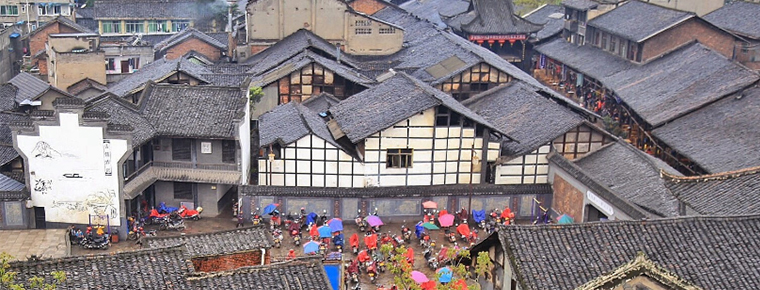
-
Sertar County
Sertar County is a county under the jurisdiction of Ganzi ....
Views: 218 Time 2018-10-12 -
Mount Heng
Mt. Hengshan, also known as "Tai Mt. Hengshan", is known as "Xuanwu mountain" and "Yushan". Among them, inverted Ma Pass, Bauhinia Pass, Pingxiaoguan Pass, Yanmen Pass.
Views: 196 Time 2018-10-30 -
Shanghai Gulf National Forest Park
Shanghai Bay National Forest Park is located in the May 4th Farm of Haiwan Town, Fengxian District, Shanghai, 60 kilometers from the center of Shanghai. It is a large artificial urban ecological fores.
Views: 144 Time 2018-12-19 -
The Religion and Customs of Baosheng Emperor
Baosheng Emperor, also known as Wu Zhenren, was born on March 15, 1979, in Baijiao Village, Tong'an County. Since his childhood father died of illness.
Views: 200 Time 2019-04-04 -
Fuzhou bodiless lacquerware decoration skills
Fuzhou bodiless lacquerware decoration technology, Fuzhou, Fujian Province, local traditional handicraft, one of the national intangible cultural heritage..
Views: 173 Time 2019-04-30 -
Haimen mountain song
Haimen Mountain Opera is a traditional opera popular in Haimen area of Nantong, Jiangsu Province. It originated from Haimen Mountain Song and developed into .
Views: 321 Time 2019-05-02 -
Five Palace Tunes in Haizhou
Haizhou Five Palace Tunes is a traditional folk music with a long history. It is an important link of Ming and Qing folk songs in Jiangsu Province. It is a precious relic of ancient "Zhugong Tune.
Views: 109 Time 2019-05-02 -
Lion Lamp in Jinggangshan Hall
"Quantang Lion Lantern" is a traditional Wushu athletic project spread in Huzhaoping Village, Shangxiang, Jinggang, Shandong Province. It has nearly 200 years history. .
Views: 152 Time 2019-05-08 -
Glass Firing Techniques
Glass firing technology, Beijing Mentougou District, Shanxi Province, local traditional handicraft, one of the national intangible cultural heritage..
Views: 169 Time 2019-05-14 -
Pingxiang spring Gong
Pingxiang Spring Gong is a traditional form of music evolved from Primula in Pingxiang, Jiangxi Province. It is widely spread in Pingxiang City and its surrounding areas. It uses Pingxiang dialect and.
Views: 144 Time 2019-06-09 -
Youyang Ancient Songs
Youyang Ancient Songs are the words chanted or chanted by sorcerers in the activities of ancestor worship, praying for high yield, exorcising evil spirits and returning vows. The Youyang Tujia and Mia.
Views: 136 Time 2019-07-14 -
Beijing University Of Chemical Technology
Founded in 1958, Beijing University of Chemical Technology, formerly known as Beijing Institute of Chemical Technology, is a high-level university founded by New China for "training advanced chem.
Views: 143 Time 2019-09-06
